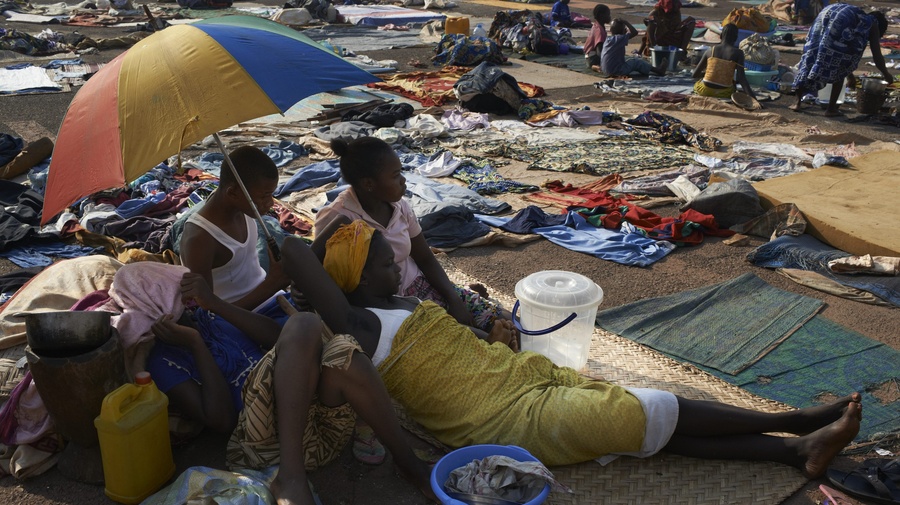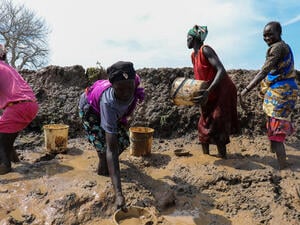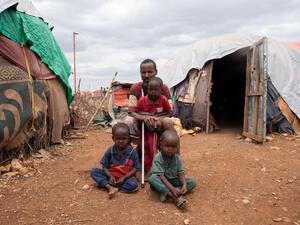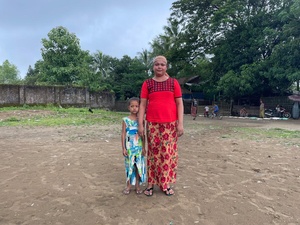More than 850,000 people in volatile Central African Republic remain displaced
More than 850,000 people in volatile Central African Republic remain displaced

Members of one family uprooted when the violence erupted last year take shade and a rest under an umbrella at a site for internally displaced people in Bangui.
BANGUI, Central African Republic, December 5 (UNHCR) - One year after a mainly Christian militia group ousted a rebel umbrella alliance from the Central African Republic capital of Bangui, more than 850,000 people, or nearly a fifth of the country's population, remain displaced.
The anti-Balaka's capture of Bangui and the town of Bossangoa from the predominantly Muslim Seleka alliance triggered a fresh wave of violence and displacement in the country of 4.5 million people. Insecurity quickly degenerated into chaos, displacing close to 1 million people inside the country and across borders.
The security situation remains volatile, with sporadic incidents of violence. In October, clashes broke out between militias and international peace-keeping forces.
More than 187,000 refugees have fled to neighbouring countries in the last year, bringing the total number of Central African Republic refugees in the region to over 423,000. Some 430,000 people remain internally displaced, half a million less than at the end of December 2013.
At the beginning of the emergency, some 3,000 to 5,000 refugees per week were arriving in Cameroon, already hosting a sizeable number of Central African Republic refugees. Most of the new arrivals were in desperate condition, showing physical evidence of the extreme violence they had suffered.
Many were severely malnourished following weeks of walking through forests with little to eat. One year on, the relocation of the refugees to safer sites and the provision of life-saving services such as water and sanitation, shelter and health care remain key priorities.
Thousands of Central African refugees also fled to Chad, together with more than 100,000 Chadian citizens, including second and third generation descendants of Chadian immigrants, mostly without identity papers. This crisis highlighted the risk of statelessness for those who have lost all links to their country of origin, without having acquired the nationality of their adopted country.
UNHCR is working with the Chadian authorities and other partners to ensure that these people receive identity documents. Nearly 70,000 Central African Republic refugees have fled to the Democratic Republic of the Congo and over 20,000 to the Republic of the Congo.
The Central African Republic situation remains one of the world's largest humanitarian crises, yet it is at risk of becoming overshadowed by other emergencies if more support is not provided. UNHCR and its partners presented a Regional Refugee Response Plan this year that includes financial requirements of US$209 million for UNHCR and 15 partners. To date, the overall needs are only 51 per cent funded.









